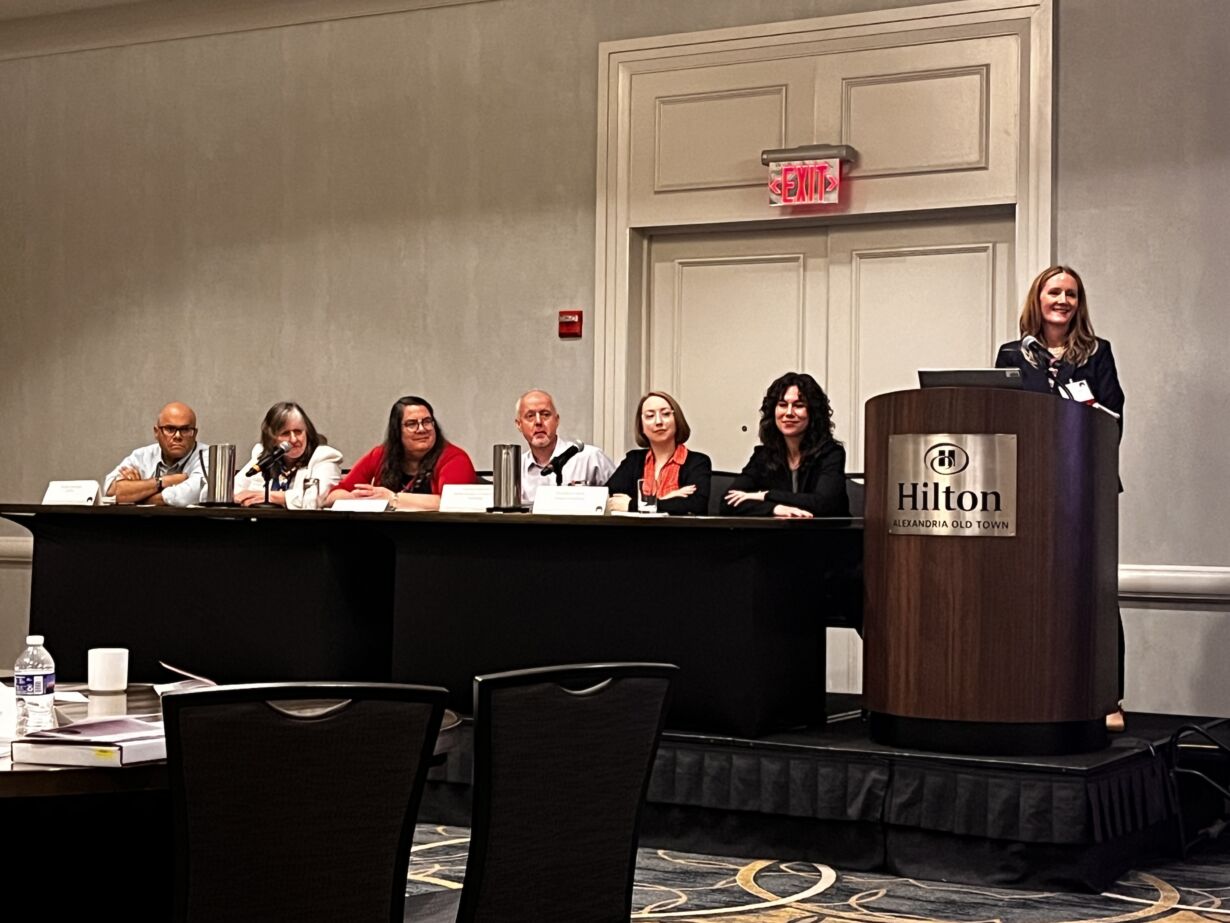Since we launched our independent research funding efforts in 2020, we have invested in leading researchers and strong science to answer important questions at the intersection of science, law, and the economy.
A pillar of this work is ensuring we have the opportunity to share the outcomes of our sponsored research with key players in this space.
One area in which the Center has been deeply involved is funding state of the science systematic reviews to answer important questions in toxicology. Which is why we are so pleased that methods from several of the Center’s research projects were highlighted at the semi-annual gathering of the Toxicology Forum, also known as the ToxForum, earlier this month.
The size and makeup of the ToxForum make it the perfect place to showcase our work due to its attendees – individuals from government, academia, independent consulting firms, and industry — and size (smaller than most conferences)
Scientific panels and discussions focused on several important topics (see below) and included an award lecture from Dr. Brian Lake, University of Surrey, entitled, Rodent Liver Tumor Formation by Activators of the Constitutive Androstane Receptor and the Peroxisome Proliferator-Activated Receptor alpha: Mode of Action Analysis and Lack of Human Relevance.
The Center partially sponsored a session titled – Is the method getting in the way of the science in Systematic Review?
This panel was chaired by Daniele Wykoff and Melissa Vincent of Tox Strategies. Some of the Center’s funded research was presented by speakers who completed independent analyses as examples of strong methods in systematic review. The session focused on the tools and techniques of good systematic review and how the method can be applied to a broad variety of research questions in chemical risk assessment.
Speakers and panelists were Lynne Haber, University of Cincinnati, Andrew Rooney, National Institute on Environmental Health Sciences, NIH, Xabier Arzuaga, US EPA, Heather Lynch, Integral, Inc., Emily Senerth, Evidence-based Toxicology Collaboration, and Peggy Murray, Center for Truth in Science.
This half-day session included a discussion of how systematic review methods can continue to improve, where the methods are limited in determining causation from observational or other types of data, and how government agency rule-making processes can benefit from applying advanced approaches to evaluating available evidence. Previous information on this panel can be found here.

Additional Panel Sessions
- Leveraging and adapting established human health risk assessment principles in the age of circularity.
This session, led by Ammie Bachman of ExxonMobil Biomedical Sciences, Inc., focused on some of the new needs in risk assessment approaches that have come about due to swiftly developing and varied operations, processes, and products used to reduce waste and emissions. The goal of the session was to build awareness of these challenges and discuss solutions, including how current risk assessment methods could be leveraged or redesigned to work on these new needs and challenges.
The speakers and panel members included Sharon Dubrow of the American Chemistry Council, Jim Huang of the Coca-Cola Company, Weihsueh Chiu of Texas A&M University, Hesbon Nyambego of ExxonMobil Biomedical Sciences, Inc. - Cumulative impacts at the crossroads: Toxicology’s role in integrating evidence.
Chaired by Kimberly Wise White of the American Chemistry Council, this session focused on the growing need for evidence beyond hazard identification and characterization, and a chemical-by-chemical approach to risk assessment, when assessing the entirety of exposures and their health effects. Cumulative-impact- research is coming into the forefront, and the discussion in this session centered on how toxicology methods can be applied, or what new methods need to be developed, to implement this approach. - Range of the PFOA safe dose for human health.
Lyle Burgoon of Raptor Pharmacology and Toxicology, Ltd, and Tamara House-Knight of GHD, Inc. led this session which revealed the results of a deep look into this topic by three independent teams totaling 24 scientists from eight countries who were selected through a nomination process. The teams separately looked at relevant information and determined that epidemiologic information alone could not form a reliable basis for human safe dose levels – mechanistic information was also needed. In addition, they concluded that a safe dose could be derived from mechanistic studies on animals.
Session participants also discussed the disagreement among several international regulatory bodies on the question of establishing a safe dose. Speakers and panelists included Harvey Clewell of Ramboll, Phil Goodrum of GSI Environmental, Inc., Michael Dourson of Toxicology Excellence for Risk Assessment, and Penny Rice of the US Food and Drug Administration.